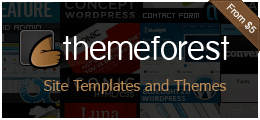One of my recent initiatives is interviewing some influential figures in the local IT industry. I have been able to interview designers, engineers, entrepreneurs, and technology gurus. Most of them are my friends, colleagues or industry leaders.
The purpose of this initiative is to know their thoughts about new technologies and get pieces of advice for youngsters. In coming weeks, I will be publishing a series of these interviews.
The first interview in this series was with Waqas Aleem.
Waqas is a product analyst and has worked as technical writer, information designer, usability engineer, business analyst and process engineer. He is co-compiler of TWIN’s book for technical writers. He is co-author of a blog on technical writing and information design DocMentors.
He is an avid gardener too and writes a gardening blog TheLovelyPlants. He can be reached at http://about.me/mughal
Following is a summary of the conversation with him.
What is your role as Product Analyst and how did you make a career in this field?
As the title suggests, I work with products; more precisely, software products. I analyze products, identify target markets, manage product life cycle and work with stakeholders to enhance current products.
I started my career as researcher and later worked as a technical writer and usability consultant for a number of software products. My experience of working in large teams, building and sharing knowledgebase and my establishing liaison with stakeholders helped me in assuming the position of Product Analyst.
What personal qualities or skills are required to someone to be successful in this occupation?
- Ability to gather, analyze and distribute information
- Learning new technologies and understanding trends in the industry
- Attention to detail
- Empathy with users
- Ability to communicate effectively
- Establishing liaison between multiple teams
What is your major challenge at work?
Getting the technical details right, explain those to stakeholders and keep all changes consistent throughout the development lifecycle.
What is your current project (that you can tell us about)?
I am working on user interface and workflows for a self-service kiosk (just like an ATM) that GSM subscribers would use to manage their accounts.
I am also working on a Dashboard application for business analytics and reporting purposes for a predictive dialer and call center software. The idea is to migrate from traditional reporting system to an interactive workspace where executives can monitor and control factors that drive their business.
What makes a software product successful?
All successful products are simple and usable. No ‘super awesome’ feature or innovative technology would help if users cannot understand and use the product.
Since you have been researching and practicing usability testing and product improvement, what type of usability test would you run if you do not have budget to buy tools.
I would give a brief idea of the product to a novice user and then ask him to talk aloud while he explores and interacts with the product. In the meanwhile, I would listen to his comments, observe his reactions (eye movement, expressions etc.), and take my notes.
If you are practicing this type of test for the first time, it could be an eye-opener for designers and developers.
Do you use any particular tool for performing usability tests?
Yes, I like Morae by TechSmith.
How freelance or solo developers can make their products usable (considering they do not have anybody to test their products for usability)?
People use products for a reason or a particular goal, for example, I go to Sign Up page to sign up for a new account. So besides understanding requirements of your project, try to understand the reason or goal of intended users. To understand the goal, you will need to interview potential users and stakeholders of the project.
The next step is to understand the ways you can achieve the goal. With a little brainstorming you can find out many alternate paths/workflows to perform a task. You can use mind maps, user stories, wireframe or simple paper sketches for this purpose.
Once you are able to find the best ways to perform a task, you task becomes simple and manageable. At this stage, you have a good vision of the project which enables you to develop simple and usable products without much re-work or revisions.
Another effective way to improve usability of your products is to use a similar product and discover turn offs, wow factors, areas of improvement in term of usability.
You also write a blog on information design. How do you define information design and what is its importance?
Information design is the art and sciences of transforming complex ideas, theories or data into graphical format in a way that it becomes easy to understand and present. Examples of information design can range from graphical workflows to data dashboards and timelines.
What is your passion these days?
These days, I am researching on crowd sourcing techniques to involve our clients in the process of improving current products and shaping concepts for new products and services.
You are an avid gardener too. Does it intrude or help you in your work?
Gardening is my pastime. It also saves me from burn outs and thus keeps me focused at work. I also write a gardening blog just to keep myself occupied when I do not feel like doing real digging in my lawn.
Thank you for sparing time for the interview.
Thank you, I have always enjoyed talking to you. I really appreciate your efforts that you doing to contribute to the open-source development community.





Pingback: Interview: Waqas Aleem « A Handsome Blog! Grab the best
Great Stuff.
Thanks for sharing such wonderful knowledge!
Thanks for sharing your experience and in lighting us with your wisdom.